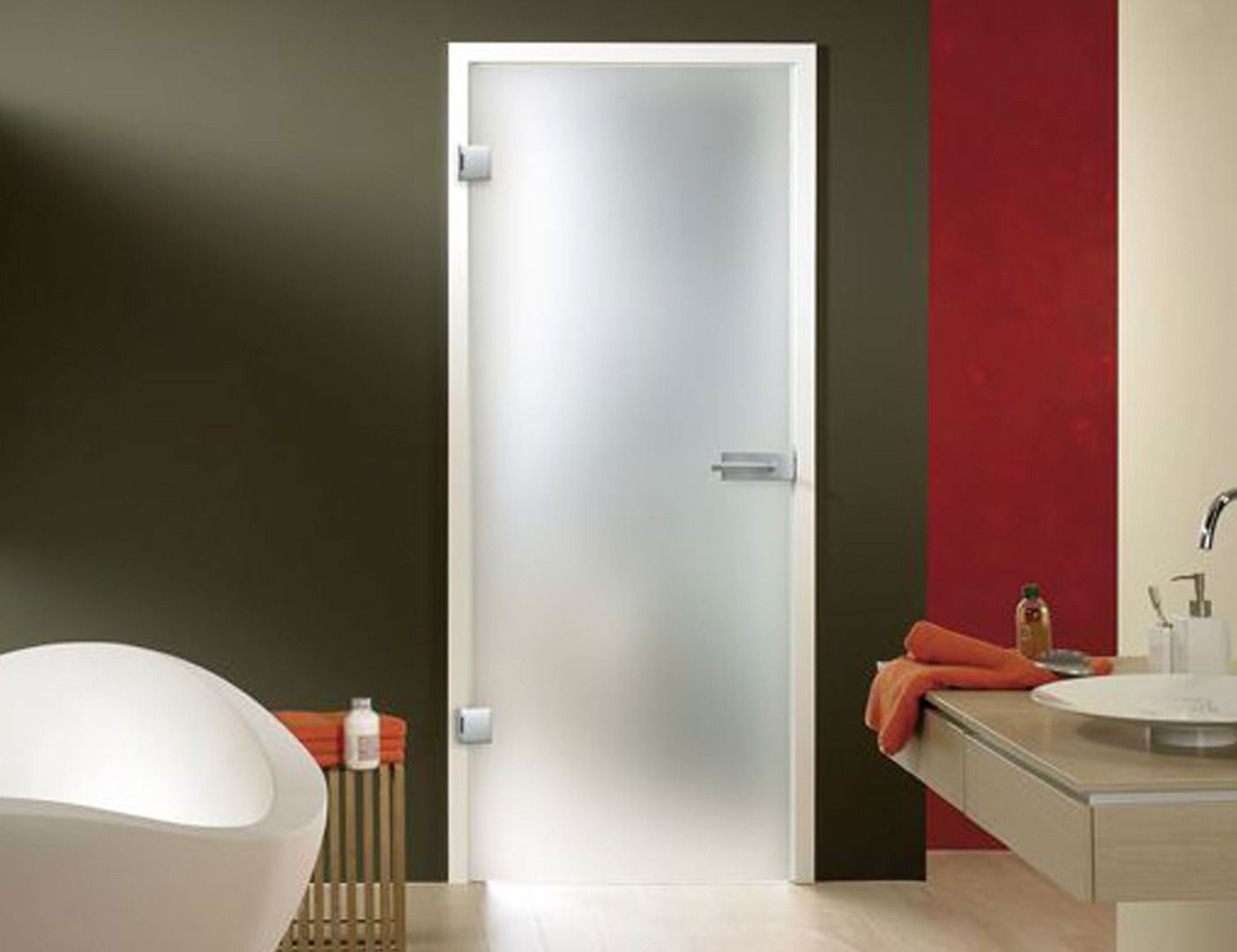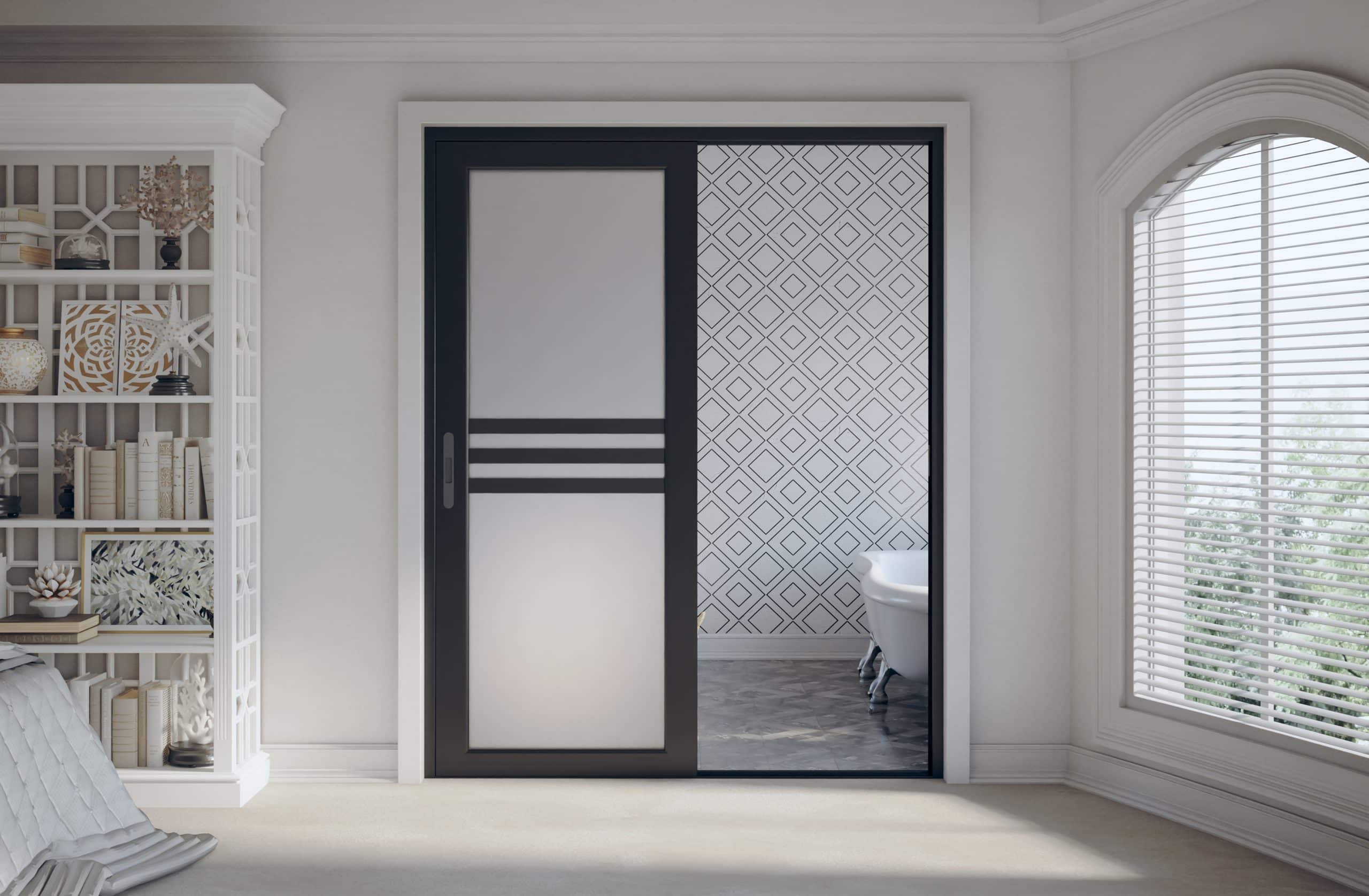Benefits of Opaque Glass Doors for Bathrooms: Opaque Glass Door For Bathroom

Opaque glass doors offer a unique blend of privacy and style, making them a popular choice for modern bathrooms. They provide a level of privacy that traditional solid doors do, while still allowing natural light to filter through, creating a bright and airy ambiance. This unique combination makes opaque glass doors a practical and aesthetically pleasing choice for any bathroom.
Privacy and Light Diffusion
Opaque glass doors provide a perfect balance between privacy and light. They obscure the view inside the bathroom, ensuring a sense of privacy, while simultaneously allowing natural light to pass through, creating a bright and welcoming space. This is particularly beneficial in smaller bathrooms where natural light is limited. The diffused light also softens the overall aesthetic, creating a more relaxing and spa-like atmosphere.
Openness and Spaciousness
Opaque glass doors contribute to a sense of openness and spaciousness in bathrooms. Unlike solid doors that create a visual barrier, opaque glass doors allow the eye to travel through the space, making the bathroom feel larger and more inviting. This is especially advantageous in smaller bathrooms, where maximizing the feeling of space is crucial.
Aesthetic Appeal
Opaque glass doors come in a variety of styles and finishes to suit any aesthetic preference.
- Frosted glass is a classic choice, providing a subtle level of privacy while still allowing light to pass through. It creates a soft and diffused light effect, adding a touch of elegance to the bathroom.
- Etched glass features intricate designs that create a unique visual texture. This option offers a more pronounced level of privacy compared to frosted glass while still allowing light to filter through. Etched glass doors are a popular choice for contemporary bathrooms, adding a touch of sophistication and artistry.
- Patterned glass offers a wide range of design options, from geometric patterns to floral motifs. This option provides a higher level of privacy while adding a distinct personality to the bathroom. Patterned glass doors are a great way to incorporate a personal touch and create a unique focal point in the bathroom.
Considerations for Choosing Opaque Glass Doors

Selecting the right opaque glass door for your bathroom involves careful consideration of various factors, including the door’s style, functionality, and durability. This decision directly impacts the overall aesthetic and practicality of your bathroom space.
Types of Opaque Glass Doors
The type of door you choose significantly impacts the look, functionality, and cost of your bathroom. Each option offers unique advantages and disadvantages, making it crucial to weigh your needs and preferences.
- Sliding Doors: Sliding doors are an excellent choice for smaller bathrooms, as they save space by moving horizontally. They are typically easier to operate than hinged doors and require less clearance for opening. However, they can be more challenging to clean, as dust and debris can accumulate along the tracks. Additionally, sliding doors might not provide as much privacy as hinged doors, especially if the tracks are not fully sealed.
- Hinged Doors: Hinged doors are a traditional and versatile option, offering a wide range of styles and designs. They provide excellent privacy and can be easily cleaned. However, hinged doors require more space to open, which can be a challenge in smaller bathrooms. Additionally, they can be heavier than sliding doors, requiring stronger frames and hardware.
- Pocket Doors: Pocket doors are a space-saving option that slides into a pocket in the wall when open. This design maximizes floor space and eliminates the need for swing clearance. However, pocket doors can be more expensive to install than other types of doors, and they require a significant amount of wall space to accommodate the pocket.
Choosing the Right Glass Thickness and Style
The thickness and style of the glass play a crucial role in the overall look and functionality of your bathroom door.
- Glass Thickness: Thicker glass provides greater durability and sound insulation. For bathrooms, a minimum thickness of 6mm is recommended for standard doors, while thicker glass (8mm or more) is preferred for larger or heavier doors. Thicker glass also contributes to enhanced privacy, as it makes it more challenging to see through the frosted or textured surface.
- Glass Style: The style of the glass significantly influences the look and feel of your bathroom. Frosted glass provides a classic and timeless look, while textured glass offers a more contemporary and unique aesthetic. Consider the overall design of your bathroom when selecting a glass style. For example, a minimalist bathroom might benefit from a clear glass door with a subtle etched pattern, while a traditional bathroom might prefer a frosted glass door with intricate designs.
Selecting a High-Quality Frame and Hardware
The frame and hardware are essential components of any bathroom door, contributing to its durability and longevity.
- Frame: The frame should be made of durable materials such as aluminum, stainless steel, or solid wood. Aluminum frames are lightweight and corrosion-resistant, while stainless steel frames offer exceptional durability and longevity. Solid wood frames provide a classic and elegant look but require regular maintenance to prevent warping or damage.
- Hardware: Choose high-quality hardware such as hinges, handles, and locks that are designed for bathroom use. These components should be rust-resistant and durable enough to withstand frequent use and exposure to moisture. Look for hardware with a smooth finish and a comfortable grip, especially if you have children or elderly individuals in your household.
Installation and Maintenance of Opaque Glass Doors
Installing and maintaining opaque glass doors is a straightforward process that ensures their longevity and functionality. Understanding the installation process, proper cleaning techniques, and potential issues allows homeowners to keep their bathroom doors in excellent condition.
Installation Process
Installing an opaque glass door requires precision and care to ensure a secure and aesthetically pleasing fit. The following steps Artikel the installation process:
- Prepare the opening: Measure the opening accurately and ensure it is level and plumb. Remove any existing door frame and clean the area thoroughly.
- Install the door frame: Depending on the type of door frame, use screws or anchors to secure it to the wall. Make sure the frame is level and plumb.
- Install the hinges: Attach the hinges to the door and the frame using screws. Align the hinges carefully to ensure smooth door operation.
- Install the door handle and latch: Attach the door handle and latch to the door and frame. Make sure the latch engages properly with the strike plate.
- Install the door stop: Install a door stop on the opposite side of the door from the hinges to prevent the door from swinging too far.
- Caulk and seal: Apply caulk around the door frame to prevent water damage and drafts.
Cleaning and Maintenance, Opaque glass door for bathroom
Regular cleaning and maintenance are crucial for maintaining the appearance and functionality of opaque glass doors.
- Regular cleaning: Wipe the glass surface with a soft cloth and a mild glass cleaner. Avoid using harsh chemicals or abrasive cleaners, which can scratch the surface.
- Water spots: To remove water spots, use a vinegar solution or a commercial glass cleaner designed for hard water.
- Scratches: Minor scratches can be buffed out with a polishing compound. For deeper scratches, consult a professional glass repair service.
- Hinges: Lubricate the hinges with a light oil to prevent squeaking and ensure smooth operation.
- Handle and latch: Clean the handle and latch regularly with a damp cloth. Make sure the latch engages properly with the strike plate.
Troubleshooting Common Issues
While opaque glass doors are generally durable, certain issues may arise over time.
- Door sticking: If the door sticks, check the hinges for any debris or corrosion. Clean and lubricate the hinges as needed. Also, ensure the door frame is level and plumb.
- Latch not engaging: If the latch does not engage properly, check the strike plate for misalignment. Adjust the strike plate or the latch as needed.
- Glass fogging: Fogging on the glass surface can be caused by moisture buildup. Ensure proper ventilation in the bathroom to prevent this issue.
- Cracks or chips: Cracks or chips in the glass require professional repair.
